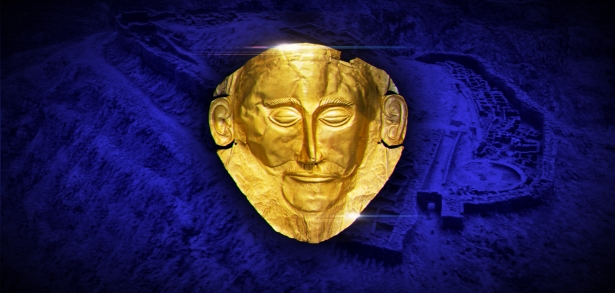
Ancient Gold of the Celts
Today you will learn the story of ancient Celtic jewelry, accidentally found in one of the farming fields in Staffordshire, England.
Discovery of amateur archaeologists
Two friends, treasure hunters from the UK, became the focus of scientist’s attention, when they found gold items that had been in the ground for 2,5 thousand years.
Mark Hambleton and Joe Kania with the help of a metal detector discovered the ancient jewelry of the Celts, which date 400-250 BC.
One day, Joe and Mark decided to explore the neighboring pasture of the Leek town, owned by farmer Stuart Heath. The friends wandered around the field with a metal detector for quite a long time and unexpectedly discovered Celtic gold jewelry that laid in the ground at a shallow depth.
In the photo: Joe Kania and Mark Hambleton hold the gold jewelry of the Celtic craftsmanship.
Friends were lost for words when they found precious artifacts. Joe says that his legs were jelly, and he "could not understand a thing, while being overwhelmed with joy." Mark kept his eyes on the ancient treasures all night, "so that nothing could happen to them." In the morning, friends went to Birmingham and handed gold items over to the representatives of the project for non-professional archaeologists.
Precious Artifacts
Mark Hambleton and Joe Kania soon realized what kind of valuables they had found: an arm bracelet and three neck rings — torcs (torques), which date from the 5th-3rd centuries BC.
Ancient Celtic jewelry have received the status of the Crown — a treasure that belonged to the state. According to the laws of Great Britain, such a status can be granted to a 300-year old relic, comprised of at least 10% of the precious metal.
Celtic jewelry, found by amateur archaeologists in Staffordshire, meets these conditions: it is 2500 years old, and the content of gold in artifacts is no less than 80%. The weight of the items ranges from 31 to 230 grams.
In the photo: the ancient jewelry was officially named "Iron Age Leekfrith Torcs" (in the name of the administrative district where they were found.)
Opinions of experts regarding the valuable findings
Experts of the British Museum were involved in the process of studying the precious artifacts. Julia Farley, the curator of the Iron Age collection, considers these findings "a unique discovery of international significance." The fact is that the jewelry found was not made in the UK. They were made by ancient Celts who lived on the continent in the territory of modern Germany or France. Most likely, these gold products were worn by a rich and influential woman who moved to Britain thanks to her marriage. So decorations were in the central part of England.
Stephen Dean, the chief archaeologist in Staffordshire, acknowledged the rarity and value of findings that "can rewrite the history of the country."
In the photo: a gold torc — a Celtic necklace that was discovered in Staffordshire, England.
The committee that assesses the material value of the contribution will determine the amount of remuneration for Mark Hambleton and Joe Kania.
In the next article we will tell you about the precious treasure found in Poland underneath the floor of one of the churches.
Since ancient times, people have dreamed of finding a valuable treasure and get fabulously rich. A modern person can accumulate personal savings by using an effective tool — gold, which serves as a long-term and reliable asset.
The purchase of physical gold is the best way to achieve the state of Financial Security!
Read also: the first article of the series about the ancient gold treasures found in our lifetime




